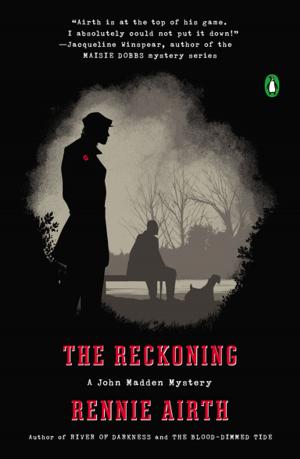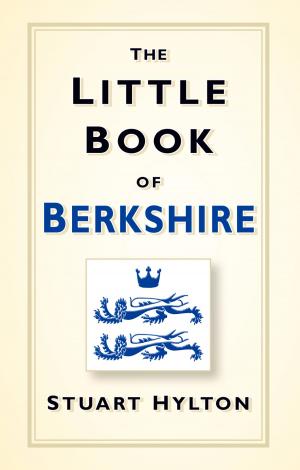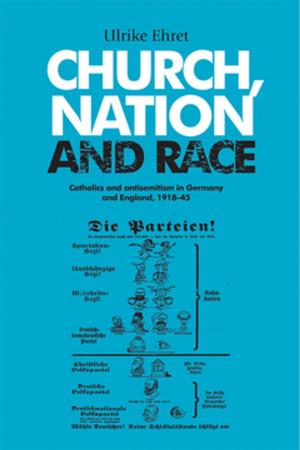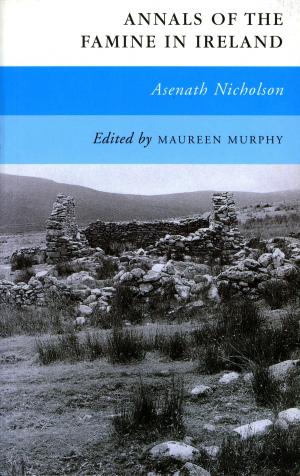Berkshire (Illustrations)
Nonfiction, History, Reference, Historiography, Travel, Europe, Great Britain, British| Author: | H. W. Monckton | ISBN: | 1230000323659 |
| Publisher: | JOHN CLAY, M.A. AT THE UNIVERSITY PRESS | Publication: | March 27, 2015 |
| Imprint: | Language: | English |
| Author: | H. W. Monckton |
| ISBN: | 1230000323659 |
| Publisher: | JOHN CLAY, M.A. AT THE UNIVERSITY PRESS |
| Publication: | March 27, 2015 |
| Imprint: | |
| Language: | English |
Example in this ebook
1. County and Shire. Meaning of the Words.
If we take a map of England and contrast it with a map of the United States, perhaps one of the first things we shall notice is the dissimilarity of the arbitrary divisions of land of which the countries are composed. In America the rigidly straight boundaries and rectangular shape of the majority of the States strike the eye at once; in England our wonder is rather how the boundaries have come to be so tortuous and complicated—to such a degree, indeed, that until recently many counties had outlying islands, as it were, within their neighbours’ territory. We naturally infer that the conditions under which the divisions arose cannot have been the same, and that while in America these formal square blocks of land, like vast allotment gardens, were probably the creation of a central authority, and portioned off much about the same time, the divisions we find in England have no such simple origin. Such, in fact, is more or less the case. The formation of the English counties in many instances was (and is—for they have altered up to to-day) an affair of slow growth, and their origin was—as their names tell us—of very diverse nature.
Let us turn once more to our map of England. Collectively, we call all our divisions counties, but not every one of them is accurately thus described. Some have names complete in themselves, such as Kent and Sussex, and we find these to be old English kingdoms with but little alteration either in their boundaries or their names. To others the terminal shire is appended, which tells us that they were shorn from a larger domain—shares of Mercia or Northumbria or some other of the great English kingdoms.
The division of England into counties or shires has often been attributed to King Alfred (A.D. 871–901), but the shire of Berks is mentioned as early as the time of Ethelbert (A.D. 860–866), and Berkshire very probably existed as a county from the days of Egbert (died 836).
The words county and shire mean practically the same thing, but the former is derived from the Latin comitatus through the French comté, the dominion of a comes, or Count, and the latter from the Saxon scir (from sciran to divide). The termination “shire” is generally used for Berkshire and four of the neighbouring counties, viz. Buckinghamshire, Oxfordshire, Gloucestershire, and Wiltshire. The next neighbouring county is usually called Hampshire, but in Acts of Parliament and official papers it is called the county of Southampton. For the remaining county, Surrey, the termination shire is not used: its name—Suthrege—tells us that it was “the South Kingdom.”
The boundary of the county follows in great part the river Thames or its tributaries but in many places it is not distinguished from the neighbouring counties by any natural features. On the west the chalk downs run from Wiltshire into Berkshire with no change at the boundary of the county, and on the south there is little distinction between the forest and moorland of Berkshire and of the adjoining tracts of Hampshire and Surrey.
Berkshire has thus existed as a county for about 1100 years; previously it was part of the Saxon kingdom of Wessex, which also comprised Hampshire, Wiltshire, Somerset, Dorset, Devon, and part of Cornwall. The Saxons were called in by the Britons to assist them against the Picts and Scots (A.D. 429–449). This was a short time after the departure of the Romans, A.D. 418, or nearly fifteen hundred years ago. The Roman rule in our district may be taken as from A.D. 40 to 418, a period of 378 years. We shall realise the length of their rule if we remember that 378 years ago Henry VIII was reigning in England.
To be continue in this ebook
Example in this ebook
1. County and Shire. Meaning of the Words.
If we take a map of England and contrast it with a map of the United States, perhaps one of the first things we shall notice is the dissimilarity of the arbitrary divisions of land of which the countries are composed. In America the rigidly straight boundaries and rectangular shape of the majority of the States strike the eye at once; in England our wonder is rather how the boundaries have come to be so tortuous and complicated—to such a degree, indeed, that until recently many counties had outlying islands, as it were, within their neighbours’ territory. We naturally infer that the conditions under which the divisions arose cannot have been the same, and that while in America these formal square blocks of land, like vast allotment gardens, were probably the creation of a central authority, and portioned off much about the same time, the divisions we find in England have no such simple origin. Such, in fact, is more or less the case. The formation of the English counties in many instances was (and is—for they have altered up to to-day) an affair of slow growth, and their origin was—as their names tell us—of very diverse nature.
Let us turn once more to our map of England. Collectively, we call all our divisions counties, but not every one of them is accurately thus described. Some have names complete in themselves, such as Kent and Sussex, and we find these to be old English kingdoms with but little alteration either in their boundaries or their names. To others the terminal shire is appended, which tells us that they were shorn from a larger domain—shares of Mercia or Northumbria or some other of the great English kingdoms.
The division of England into counties or shires has often been attributed to King Alfred (A.D. 871–901), but the shire of Berks is mentioned as early as the time of Ethelbert (A.D. 860–866), and Berkshire very probably existed as a county from the days of Egbert (died 836).
The words county and shire mean practically the same thing, but the former is derived from the Latin comitatus through the French comté, the dominion of a comes, or Count, and the latter from the Saxon scir (from sciran to divide). The termination “shire” is generally used for Berkshire and four of the neighbouring counties, viz. Buckinghamshire, Oxfordshire, Gloucestershire, and Wiltshire. The next neighbouring county is usually called Hampshire, but in Acts of Parliament and official papers it is called the county of Southampton. For the remaining county, Surrey, the termination shire is not used: its name—Suthrege—tells us that it was “the South Kingdom.”
The boundary of the county follows in great part the river Thames or its tributaries but in many places it is not distinguished from the neighbouring counties by any natural features. On the west the chalk downs run from Wiltshire into Berkshire with no change at the boundary of the county, and on the south there is little distinction between the forest and moorland of Berkshire and of the adjoining tracts of Hampshire and Surrey.
Berkshire has thus existed as a county for about 1100 years; previously it was part of the Saxon kingdom of Wessex, which also comprised Hampshire, Wiltshire, Somerset, Dorset, Devon, and part of Cornwall. The Saxons were called in by the Britons to assist them against the Picts and Scots (A.D. 429–449). This was a short time after the departure of the Romans, A.D. 418, or nearly fifteen hundred years ago. The Roman rule in our district may be taken as from A.D. 40 to 418, a period of 378 years. We shall realise the length of their rule if we remember that 378 years ago Henry VIII was reigning in England.
To be continue in this ebook



![Cover of the book With The R.A.M.C. In Egypt [Illustrated Edition] by H. W. Monckton](https://www.kuoky.com/images/2014/august/300x300/9781782892717-bmUl_300x.jpg)











